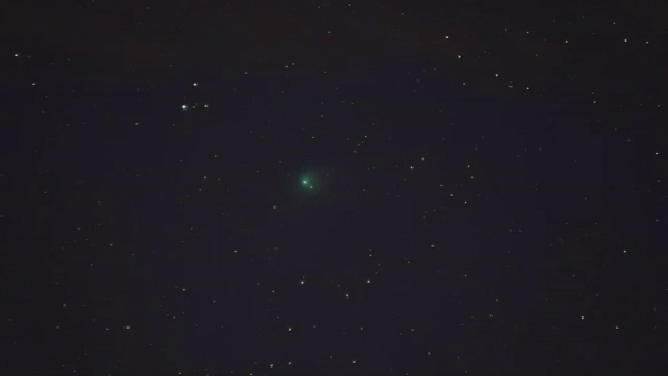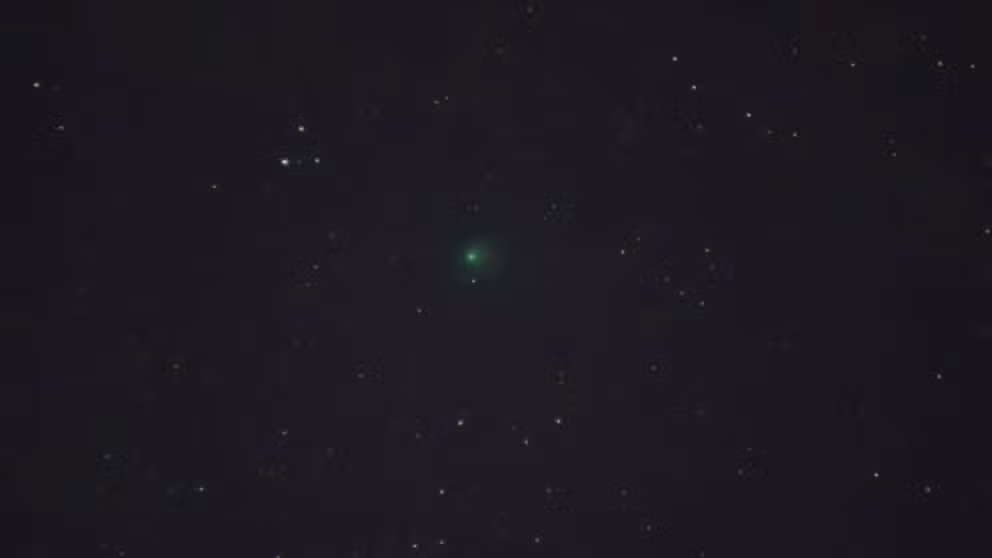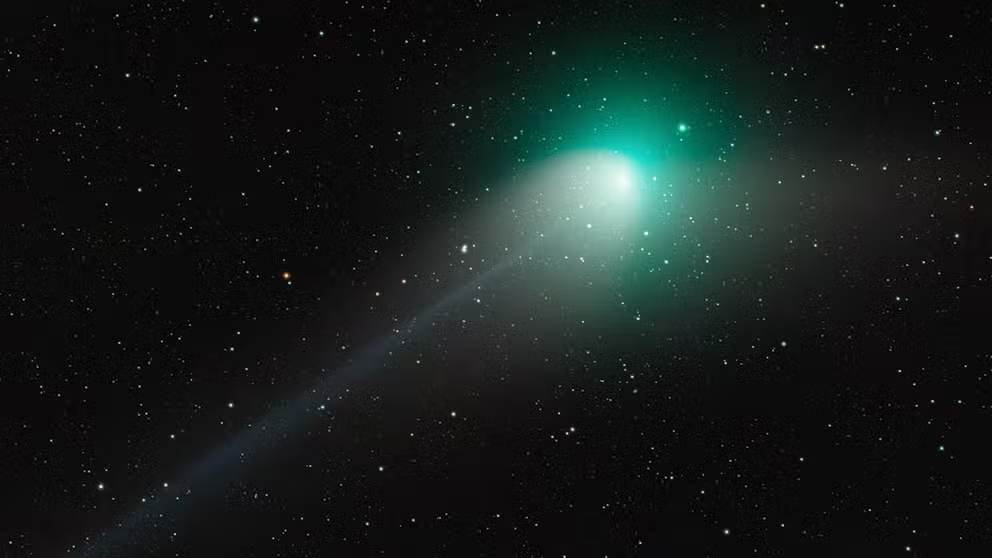Watch: Green comet makes closest approach to Earth in 50,000 years and you still have time to catch a glimpse
On Jan. 12, Comet C/2022 E3 (ZTF) reached perihelion - its closest approach to the sun. This made a good time to begin looking for the comet at night. Since then, the comet has been seen by people on Earth with the help of telescopes and binoculars.
Watch: Green comet approaches Earth for the first time in about 50,000 years
A newly-discovered comet made its closest approach to Earth in about 50,000 years on Wednesday. The
BIRMINGHAM, Ala. - An impressive time-lapse video recorded in the Deep South shows the newly-discovered "green comet" that has made its closest approach to Earth in about 50,000 years.
The out-of-this-world video was recorded by Matt Graves Wednesday night over a period of about 45 minutes, and shows the comet, officially named Comet C/2022 E3 (ZTF), shooting across the night sky.
Rare green comet sighting: Where and when to see it
This celestial sighting is a bit like space-speed dating. Astronomers only just learned of Comet C/2022 E3's existence, and it will be gone before we know it. Learn how it was discovered and why a naked-eye comet is rare.
According to NASA’s Jet Propulsion Laboratory, the green comet was traveling at about 128,000 mph when it made its closest approach to the planet at just over 26 million miles.
Astronomers at the National Science Foundation's Zwicky Transient Facility (ZTF) in California first detected this moving object in the solar system on March 2, 2022.
On Jan. 12, Comet C/2022 E3 (ZTF) reached perihelion - its closest approach to the sun. This made an excellent time to begin looking for the comet at night. Since then, the comet has been seen by people on Earth with the help of telescopes and binoculars.
During its closest approach to the Earth Wednesday night and Thursday, the celestial wonder can be seen with the naked eye.
And if you didn't have time to catch a glimpse overnight, you still have some time to check it out - but you need to be fast.
When will Comet C/2022 E3 (ZTF) return?

A newly-discovered comet made its closest approach to Earth in about 50,000 years on Wednesday. The "green comet," or Comet C/2022 E3, will safely pass by the planet by more than 26 million miles.
ZTF's Comet was initially thought to make another close pass by Earth in 50,000 years. Astronomers now estimate it could be a few million years before another flyby.
University of Maryland astronomer and ZTF Survey member Ye Quanzhi said scientists would have a better idea of its orbital period after it's heading outbound to see how its passage through the inner solar system messes with the comet's orbit.
"It's safe to say that the comet won't be back anytime soon," Quanzhi told FOX Weather via email.
RETIRED NASA SATELLITE CRASHES INTO EARTH OFF ALASKA'S COAST
You still have time to catch a glimpse of Comet C/2022 E3 (ZTF)
Timelapse shows rare comet making its approach to Earth
The images of Comet C/2022 E3 ZTF were captured on Sunday from a telescope in Italy on Jan. 29, 2023. (Courtesy: Gianluca Masi / Virtual Telescope Project)
The Virtual Telescope Project, along with Telescope Live, gave stargazers worldwide the opportunity to watch the comet fly by during a live stream on Wednesday night on the Virtual Telescope Project's webTV page.
If you missed it, don't worry! You can still check it out on your own.
Thomas Prince, astronomer and director of the W.M. Keck Institute for Space Studies at Caltech, offered some suggestions if you want to see the green comet before it's gone.
"It has to be a dark sky and moonless in the sky," Prince said.
Prince said to try and get to an area with as little light pollution as possible, away from city lights.
LOOK OUT FOR THESE ASTRONOMICAL EVENTS IN FEBRUARY
Even though this is considered a bright "naked-eye" comet, using a pair of binoculars will help. To find the comet, look for a bright fuzzy object.
"It will distinguish itself probably from other stars because it will look a little bit fuzzy compared to other stars," Prince said.
Prince offered another trick to spotting the comet. On Feb. 10, the comet will be about 1.5 degrees from Mars.
"Mars is very bright, and you can just look within one degree around Mars and maybe be able to see it," Prince said.
If you miss this one, there will be more opportunities to view comets in your lifetime. According to NASA, there are more than 3,700 known comets.


